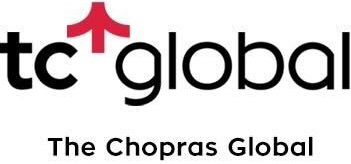If getting into business schools in global destinations is what’s on your mind, then you can’t skip the Graduate Record Examination (GRE) and the Graduate Management Test (GMAT). Both these tests are a pre-requisite to get admission to graduate schools, which assess your ability to analyse, think critically, and problem-solving capabilities, based on the scores.
In light of the pandemic, Educational Testing Service (ETS) allows candidates to take GRE from home. The online GRE is identical in content and format and will be monitored by a human proctor online through the program ProctorU.
Here’s a guide for you to ace GMAT and GRE in 2021:
Unlike GRE, those who are giving the GMAT exam are not permitted to use a physical whiteboard or a sheet of paper. Instead, there is the provision of a digital whiteboard, which includes pens, erasers, panning, colours, and more. To avoid facing panic on exam day, try to practice using the whiteboard’s mock version, which is available online.
It allows you to enter text, and draw shapes and lines, as well as change stroke size of lines, fill and background colours of shapes, size, and font of the text. You can also erase or clear the board to start something new.
If you’ve decided to give GRE, you can use a physical whiteboard with a marker or a transparent sheet protector
Students are getting increasingly apprehensive about the new rule to not use pencil and paper during online tests. Although ETS does allow a physical whiteboard during at-home GRE, it is recommended that you spend time working on your mental maths skills to save time.
The only thing that can help you here is practice, but we’ve also got some other handy tips for you.
- Break calculations into factors of 2, 5, 10, 100 and ½
- Try practicing customised worksheets online. The more you practice, the better you’ll get!
- Try and process non-integers as fractions, decimals, and percentages.
- Practice exponential and radical manipulation
This is one huge difference between the in-person and at-home tests that is troubling students. When you give the GMAT, you have to attempt in a certain order: first Quantitative Reasoning, followed by Verbal Reasoning and then Integrated Reasoning. The exam no longer includes Analytical Writing Assessment. There is no change in the GRE pattern.
You might think the section order isn’t going to affect your final score, but you don’t want to take any chances. That’s why take as many practice tests as possible so that you’re prepared for the big day.
Timing is of utmost importance when you appear for both GRE and GMAT tests. It is tricky, especially in the case of GMAT, because you have about two minutes for each question. Here are GMAT’s instructions regarding the timing strategy: complete the 31 questions in the quantitative (math) section in 62 minutes, and the 36 questions in the verbal section in 65 minutes. Although it sounds simple, it’s easier said than done. That’s why it is important to practice as much as possible!
Also, there are several myths that float on social media but do not believe them. There’s a popular perception that the first part of the GMAT test is most important and that the algorithm knows your GMAT score only after the first five questions, so you don’t need to pay attention to the other things. Do not believe this at all!
You can certainly follow a few best practices to ace the exam. For instance, it’s always important to keep a track of where you are in the test, because if you do not know you are ahead or behind, then it’s impossible to score well. Try to have timing benchmarks, which will be helpful to know how many questions should be completed by a certain point in an exam.
You should also count down, and not up so that you know how much time has passed.
If you’re looking to ace GRE or GMAT, then you can’t rely on just one book or study material; try to refer to multiple sources. There are some books that intensely focus on certain subjects and lessons! Also, make sure to track your progress while you study so that you can optimise your practice to the best.
You might find this tip bizarre, because how can sleep be a part of your preparation? Well, it is. That’s because when we sleep, we consolidate learning and remember them well. If you do not get enough sleep, then it could trigger anxiety. Moreover, sleep deprivation is associated with high levels of stress, and that means excess production of cortisol. Even if you try to cram for hours at end, it’s not going to help in any way.
It is quite likely that you will come across questions in these exams, where you will have to apply educated guessing. In such cases, you have to analyse the information that is given, and options to eliminate the wrong ones. It will help you save time, because you can’t spend forever trying to solve complex questions!
If you are planning on taking an at-home GRE, then you must make sure all your equipment is in place. You can go through this list of equipment requirements available on the ETS website, which includes installing the ETS Test Browser.
Additionally, try to make sure that your room is tidy because students are asked to provide a 360-degree camera view of the room and desk prior to taking the exam.
Once you’re well-prepped, take a mock test. This is important because it will help you get a sense of the ballpark figure of your actual score. You can then decide whether the time is right to take the test. Moreover, this will also help you understand the gaps and the areas of improvement, and the specific kind of questions that you may have trouble with.
At TC Global, we run extremely valuable mock tests, where the faculty provides a detailed report and feedback to the students on the tests. This helps them understand the gaps better and provides them insights into steps to take to get a better score
While the GRE and the GMAT are not a walk in the park, there is a method to getting it right. If you follow the steps and put in the work required, it’s possible to get a good score.
Feel free to reach out to us, if you have any questions and find out more about blended learning techniques.







